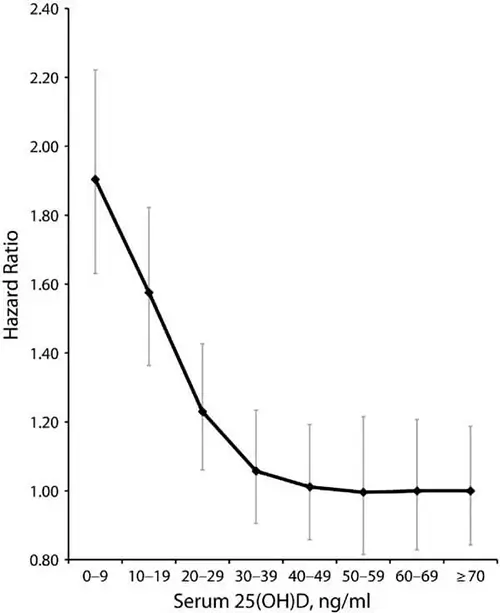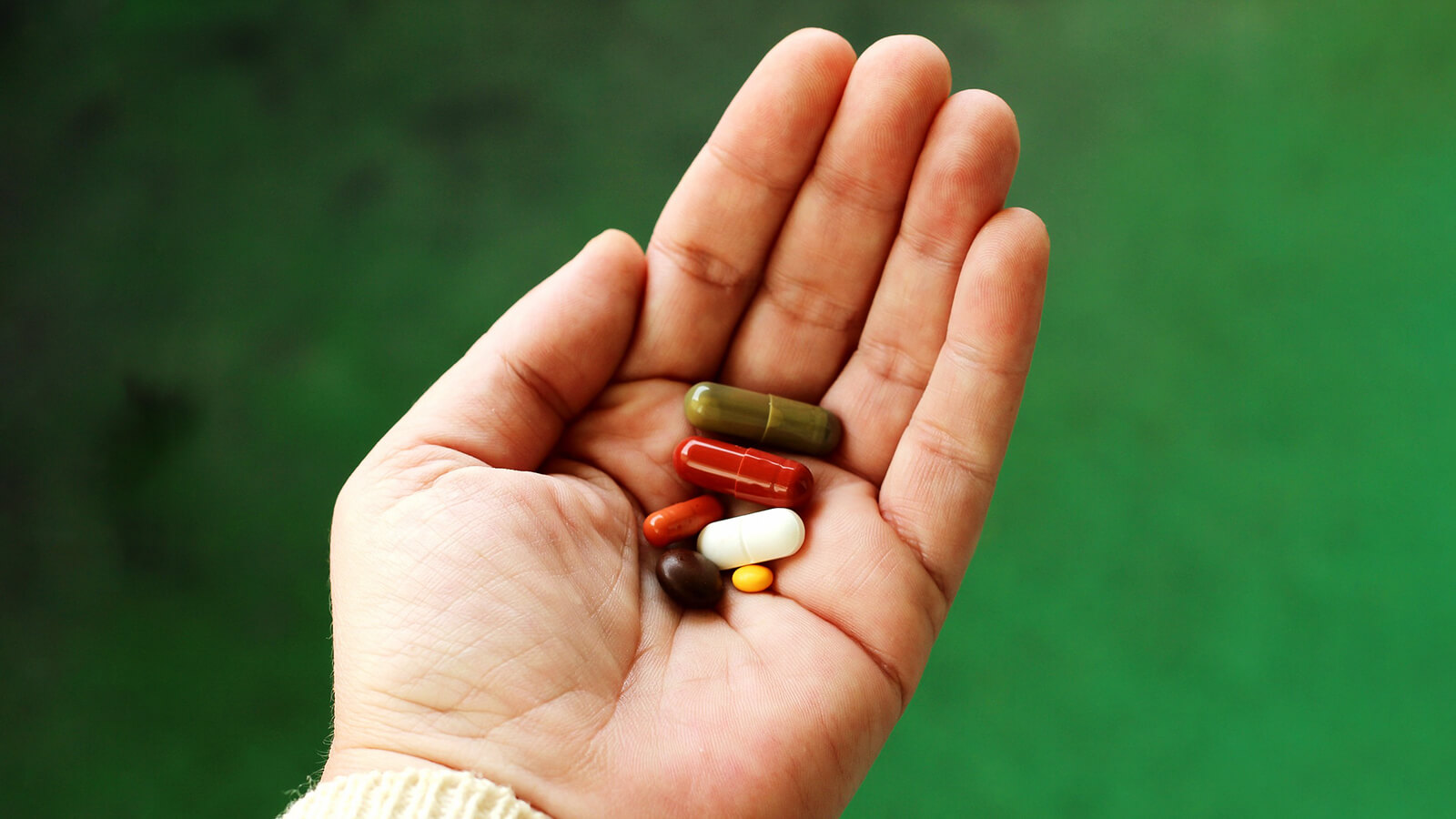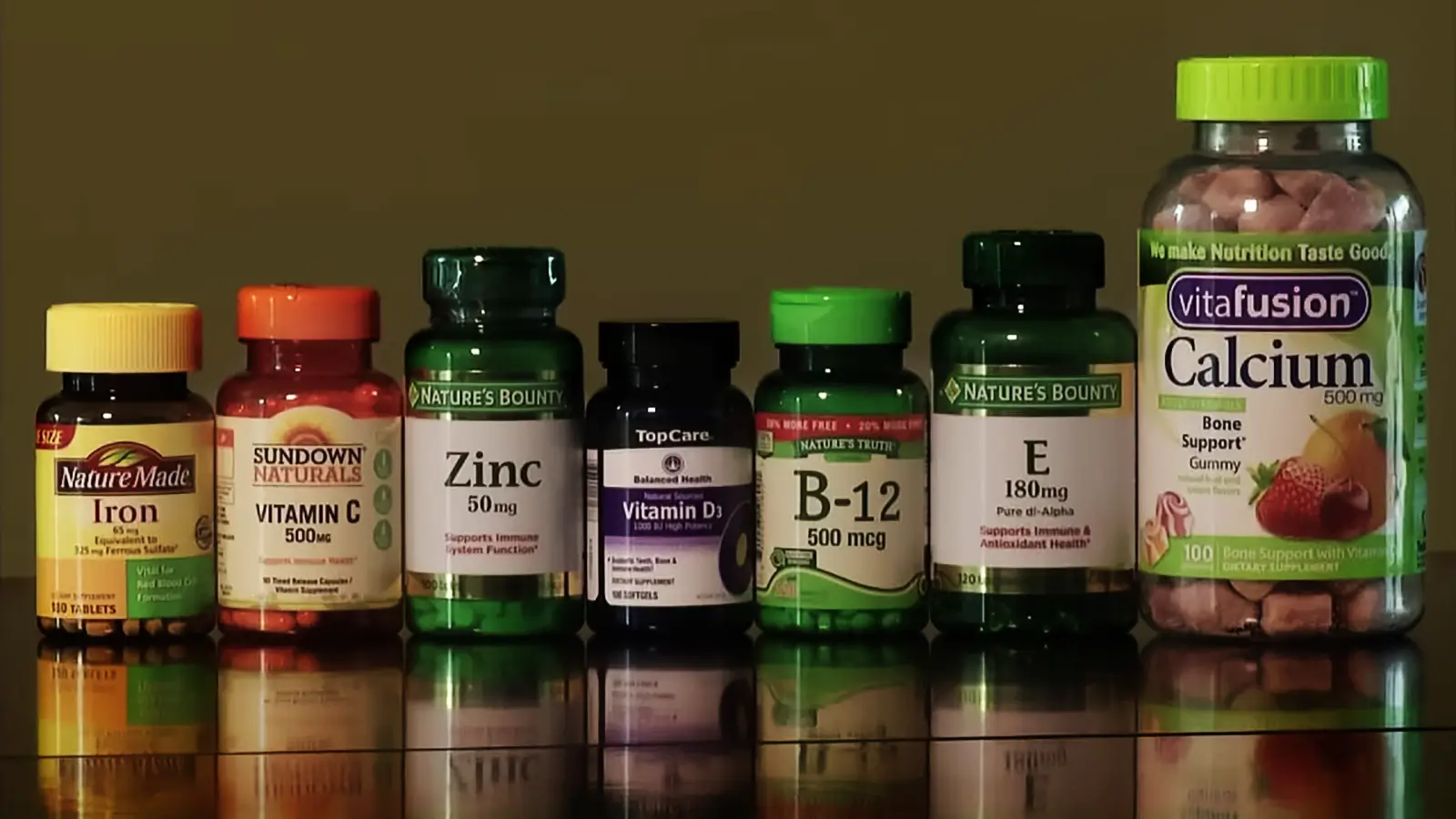Vitamin D deficiency- The optimization strategies
With vitamin D deficiency we will suffer from a wide range of health issues even if we don’t have a directly visible bone disease.
Milos Pokimica
Written By: Milos Pokimica
Medically Reviewed by: Dr. Xiùying Wáng, M.D.
Updated June 9, 2023Vitamin D is an essential vitamin with many different functions. It is a prohormone, steroid with a hormone-like activity that regulates about 3% of the human genome (Carlberg, 2019). More than 2,000 genes overall. It is essential for different life functions, for instance, one of them is calcium development. Besides calcium metabolism, immune system regulation will be one of vitamin D’s most essential functions. Science so far doesn’t have research for every gene that vitamin D can activate but it is important to understand that without vitamin D level optimization even if we don’t have blatant vitamin D deficiency, we will suffer from a wide range of health issues even if we don’t have a directly visible bone disease. Vitamin D deficiency is a worst-case scenario.
Also, we need to understand that optimizing vitamin D levels is important for the long-term prevention of osteoporosis. Osteoporosis starts long before and lasts for a long time until the visible effects can be diagnosed. Having high bone density in younger years and preventing vitamin D deficiency throughout our entire life will have an impact on bone density in old age. Visible symptoms of vitamin D deficiency rickets that include bone deformities and bone pain, slow growth, fractures, and seizures are already the last stages of chronic deficiency disease. It cannot be cured with vitamin D supplementation and with additional calcium because the damage is already done. Prevention is the only way. The way osteoporosis can be treated is with additional medications that will promote calcium metabolism in the bones. Problem is that taking medication for osteoporosis has other side effects. Some medication like Reclast (zoledronic acid) is even taken intravenously every two years to help prevent it. Vitamin D is a vitamin and that means it is essential for life there is no way that we can avoid that simple fact even if we disregard the effects it has on bone disease. Not optimizing our vitamin D levels is the same as having any other nutrient deficiency of any other essential nutrient with one difference and that is that it takes a little longer time for its effects to be visible but at the same time once when we lose our bone density it is hard to bring it back.
There is one other difference between vitamin D and every other essential nutrient. That difference is that we create our own vitamin D if we have sun exposure so we do not need to ingest it in the food. There is some vitamin D in the foods that we eat and some food products are fortified with it but the level of fortification is not at the optimal level and vitamin D deficiency is rampant in most of the population. In the US around 40% of the population is in the severe vitamin D deficiency category and more than 85% are in the insufficient level category (Carlberg, 2019). Most likely if you do not have a severe deficiency you will still lack an adequate and optimal level of vitamin D for normal body functioning. What causes vitamin D deficiency is a modern way of life, it is a form of maladaptation to our current environment.
So the question arises, how much do we need for optimal health optimization?
In the medical field usual scientific practice is to recommend nutrition intake at the levels that are needed to prevent the disease. It is not an accepted scientific method to recommend the levels that are the most optimal and that we are adapted to in our evolution. It is only the levels that scientists believe are necessary to prevent a pure form of vitamin D deficiency.
Up until recently, the official RDA for vitamin D was considered to be 200 international units a day and that was an average intake for most people. And before that, there was an accepted belief that 100 IU of vitamin D3 is enough to prevent flagrant signs and symptoms of rickets. Because the number of 100 units was enough to prevent bone disease scientists with no real experimentation recommended 200 units just to be safe. They believed that that was more than adequate to satisfy the body’s vitamin D requirement. Then there was a line of experiments when the Institute of Medicine decided to make a recommendation on specific blood levels of vitamin D that should prevent rickets. They calculated that to get to this level most people would require about 600 IUs a day.
Today the RDA is 600 IU a day and that is an official recommendation. With this new RDA, around 40% of Americans still have vitamin D deficiency. The problem is that even these 600 IU’s are far less than what would be the most optimal level in an evolutionary sense. The level that will promote the most health and longevity effects. One way the medicine can determent the most optimal level is by testing for the hormone in the blood called PTH. Our bodies secrete PTH in situations when the body detects that we don’t have adequate levels of active vitamin D3 for bone metabolism in an effort to raise its levels. When levels in the bloodstream go below 20 nanograms/ml our body will start to produce PTH to protect our bones from softening. And this is just bones.
Vitamin D affects our entire genome and most of the organs and their functioning from the brain to muscle tissue. Measuring just its effects on calcium metabolism is still not the optimal strategy.
“Body requires 5- to 10-fold higher intakes than is currently recommended by health agencies. There is now overwhelming and compelling scientific and epidemiologic data suggesting that the human body requires a blood level of 25(OH)D above 30 ng/mL for maximum health. To increase the blood level to the minimum 30 ng/mL requires the ingestion of at least 1000 IU of vitamin D per day for adults.”
(Holick, 2010)
It is also important for immune system function and prevention of autoimmune diseases from allergies to asthma to multiple sclerosis, prevention of cancers of a different type, periodontal disease prevention, depression, obesity, diabetes type 2, and overall mortality. (Glade, 2013)
“Adequate vitamin D status seems to be protective against musculoskeletal disorders (muscle weakness, falls, fractures), infectious diseases, autoimmune diseases, cardiovascular disease, type 1 and type 2 diabetes mellitus, several types of cancer, neurocognitive dysfunction and mental illness, and other diseases, as well as infertility and adverse pregnancy and birth outcomes. Vitamin D deficiency/insufficiency is associated with all-cause mortality.”
(Pludowski et al., 2013)
At one point in the 20th century, even wire cages were affixed to tenement buildings so that people can put babies in there so that babies could benefit from the sun.
Beyond rickets prevention, if we manage to prevent all of the diseases that are caused by vitamin D deficiency, it is still important vitamin for all-cause mortality, meaning it will promote longevity even if we don’t have any disease risk. We will live longer if we have normal and optimized levels. But what exactly are the optimal levels? One way is to measure the level of vitamin D and compare it to different rates of diseases but that does not directly mean that is the optimal level because it is just observation. Vitamin D deficiency might not be the cause. What is needed is clinical trials where you give people D supplements to prove that vitamin D is effective.
In the last 50 years, there are hundreds of clinical trials involving more than 100,000 people so we have the knowledge now. Vitamin D does help in disease prevention, it does promote longevity and it is cheap. The effects are also potent for example 13% in terms of reduction of total mortality (Chowdhury, 2014). The level of reduction that everyday exercise will cause is 11% so the effects are even more pronounced than everyday exercise. Also, the effect is cumulative. And also this is on top of all the benefits we will have on chronic diseases that can deteriorate the quality of life and are not life-threatening like allergies for example. Keep in mind that taking supplemental vitamin D is no excuse to eat one more donut. Healthy eating will have a cumulative effect on vitamin D optimization. In most studies, the levels of vitamin D are also not completely optimized so the reduction in mortality can be higher if we take an adequate level of supplementation. Also, the positive effects are only correlated with supplementation with active D3 type. It is the type derived from plants and animals and not vitamin D2, the type derived from mushrooms.
So how much? The answer is it depends. Two different individuals can get the same dose but will have different levels in the bloodstream. Then it depends on sun exposure, it depends on dietary intake. The optimal level of supplementation can be only measured with a blood test in individual cases. When scientists give recommendations they will be based on relative numbers for the percentage of the population. For example, they will say take “this” amount of it and 3 out of 5 people will have more “that” that level in the bloodstream. It is not the rule but more in line with recommendations. You will have to do a blood test if you want to know the exact level in your blood.
The problem with vitamins is that you can take too much. In the case of vitamin D and its benefits is not as dangerous vitamin as vitamin A for example. If you overdose on vitamin A you can have serious problems. For example, supplemental vitamin E promotes cancer while dietary vitamin E prevents cancer even at the optimal level. We have to analyze the optimal level and then we have to find the optimal supplementation strategy that will in our individual case put us to that optimal level.
With vitamin D it was believed to be a U shape curve. Most of the benefits in the studies will get at around 70 to 80 nmol/L (Bischoff-Ferrari, 2008). This is the optimal level in the blood. For cancer prevention, the level can be as high as 90-120 nmol/l. More than that will have no additional health benefits. Also, very high levels are correlated with a slight increase in mortality. The risk and increase are not substantial but the apparent sweet spot is around 75 or 80 nanomoles per liter [nmol/L] and more than that you will just be wasting money.
Because vitamin D is a hormone not a vitamin per se there was a debate in the scientific community about its toxic level. The good news is that in order to go to the toxic level we will have to do a serious supplemental overdosing in levels of more than 10,000 IU a day for an extended period. In real-life conditions, although it is still a U-shaped curve it is practically an L curve (Garland et al., 2014).
We can get to an optimal dose without the risk of overdosing and that is good news. We don’t have to do testing and worry about overdose as long as we don’t go above the levels of 10,000 IU a day for an extended period of time. Testing is not recommended and it is not necessary, it is expensive and not accurate. If you do testing there will be a variation in results from 2 to 5 times in different laboratories. You can get a result of 30 ng/ml or 120 ng/ml. In all practical sense, testing is useless. So how much should we take?
An intake of no less than 1000 IU of vitamin D3 (cholecalciferol) per day for all adults may bring at least 50% of the population up to 75 nmol/l (30ng/ml). This means 5 out of 10 people will be at an optimal level depending on their skin color, level of sun exposure, and dietary intake and this is for a population in the US. Because essentially there is no risk of excessive intake of vitamin D the supplementation for 100 percent of the population for everyone to be in the optimal range including individuals with zero sun exposure and zero dietary intake, the dose will be 2200IU. For most of the population anywhere in the world to have a value of 80nmol/L or higher may require a daily oral intake of 2200IU.
Because the government doesn’t want people to overdose themselves even if there is no real risk the tolerable upper intake level is currently set at 2000IU/day.
Actual toxicity is not seen below serum values of 250nmol/L, a value that would be produced only at continuing oral intakes in excess of 10,000IU/day.
The margin of toxicity is extensive. So how much should you take? Because it is one of the cheapest supplements the answer is at least 2200IU a day and more if you are obese and more the older you are. If you are 70 years old you will need 3,500IU to reach the same level.
There might be some risks of toxicity if you overdose that science has not determent yet especially in you have some sort of condition. It also has the potential to lower vitamin A levels. That is the reason you don’t want to overdose. There is no need for it. But again overdosing on vitamin D is very hard to do. For example, in a situation where we are exposed to the sun, our body is able to create thousands of units of it in minutes and is able to store it as well. We cannot naturally overdose ourselves with sun exposure. It will just be stored for later use. That means our body will be able to mobilize its own reserves if our daily intake falters temporarily. It is an oil-soluble vitamin and that is the reason obese people need more, in some cases two times more of it to reach the same blood levels. It is a reason for wide confusion and public recommendations that can range from 600IU to 10,000IU.
References:
- Carlberg C. (2019). Nutrigenomics of Vitamin D. Nutrients, 11(3), 676. https://doi.org/10.3390/nu11030676
- Parva, N. R., Tadepalli, S., Singh, P., Qian, A., Joshi, R., Kandala, H., Nookala, V. K., & Cheriyath, P. (2018). Prevalence of Vitamin D Deficiency and Associated Risk Factors in the US Population (2011-2012). Cureus, 10(6), e2741. https://doi.org/10.7759/cureus.2741
- Holick M. F. (2010). Vitamin D: extraskeletal health. Endocrinology and metabolism clinics of North America, 39(2), . https://doi.org/10.1016/j.ecl.2010.02.016
- Glade M. J. (2013). Vitamin D: health panacea or false prophet?. Nutrition (Burbank, Los Angeles County, Calif.), 29(1), 37–41. https://doi.org/10.1016/j.nut.2012.05.010
- Pludowski, P., Holick, M. F., Pilz, S., Wagner, C. L., Hollis, B. W., Grant, W. B., Shoenfeld, Y., Lerchbaum, E., Llewellyn, D. J., Kienreich, K., & Soni, M. (2013). Vitamin D effects on musculoskeletal health, immunity, autoimmunity, cardiovascular disease, cancer, fertility, pregnancy, dementia and mortality-a review of recent evidence. Autoimmunity reviews, 12(10), 976–989. https://doi.org/10.1016/j.autrev.2013.02.004
- Chowdhury, R. (2014). Vitamin D and risk of cause specific death: systematic review and meta-analysis of observational cohort and randomised intervention studies. Database of Abstracts of Reviews of Effects (DARE): Quality-assessed Reviews – NCBI Bookshelf. https://www.ncbi.nlm.nih.gov/books/NBK200718/
- Bischoff-Ferrari H. A. (2008). Optimal serum 25-hydroxyvitamin D levels for multiple health outcomes. Advances in experimental medicine and biology, 624, 55–71. https://doi.org/10.1007/978-0-387-77574-6_5
- Garland, C. F., Kim, J. J., Mohr, S. B., Gorham, E. D., Grant, W. B., Giovannucci, E. L., Baggerly, L., Hofflich, H., Ramsdell, J. W., Zeng, K., & Heaney, R. P. (2014). Meta-analysis of all-cause mortality according to serum 25-hydroxyvitamin D. American journal of public health, 104(8), e43–e50. https://doi.org/10.2105/AJPH.2014.302034
Related Posts
Do you have any questions about nutrition and health?
I would love to hear from you and answer them in my next post. I appreciate your input and opinion and I look forward to hearing from you soon. I also invite you to follow us on Facebook, Instagram, and Pinterest for more diet, nutrition, and health content. You can leave a comment there and connect with other health enthusiasts, share your tips and experiences, and get support and encouragement from our team and community.
I hope that this post was informative and enjoyable for you and that you are prepared to apply the insights you learned. If you found this post helpful, please share it with your friends and family who might also benefit from it. You never know who might need some guidance and support on their health journey.
– You Might Also Like –

Learn About Nutrition
Milos Pokimica is a doctor of natural medicine, clinical nutritionist, medical health and nutrition writer, and nutritional science advisor. Author of the book series Go Vegan? Review of Science, he also operates the natural health website GoVeganWay.com
Medical Disclaimer
GoVeganWay.com brings you reviews of the latest nutrition and health-related research. The information provided represents the personal opinion of the author and is not intended nor implied to be a substitute for professional medical advice, diagnosis, or treatment. The information provided is for informational purposes only and is not intended to serve as a substitute for the consultation, diagnosis, and/or medical treatment of a qualified physician or healthcare provider.NEVER DISREGARD PROFESSIONAL MEDICAL ADVICE OR DELAY SEEKING MEDICAL TREATMENT BECAUSE OF SOMETHING YOU HAVE READ ON OR ACCESSED THROUGH GoVeganWay.com
NEVER APPLY ANY LIFESTYLE CHANGES OR ANY CHANGES AT ALL AS A CONSEQUENCE OF SOMETHING YOU HAVE READ IN GoVeganWay.com BEFORE CONSULTING LICENCED MEDICAL PRACTITIONER.
In the event of a medical emergency, call a doctor or 911 immediately. GoVeganWay.com does not recommend or endorse any specific groups, organizations, tests, physicians, products, procedures, opinions, or other information that may be mentioned inside.
Editor Picks –
Milos Pokimica is a doctor of natural medicine, clinical nutritionist, medical health and nutrition writer, and nutritional science advisor. Author of the book series Go Vegan? Review of Science, he also operates the natural health website GoVeganWay.com
Latest Articles –
Plant Based News
-
Vegan Cheese Brand Miyoko’s Introduces Taco Blend ‘Shreds’
on July 5, 2025
-
Comforting Curried Veggies
on July 5, 2025
-
10 Vegan Summer Breakfast Ideas
on July 5, 2025
-
New Netflix Documentary Highlights Impact Of Fishing On Sharks
on July 4, 2025
-
NotCo And Doritos Launch Flamin’ Hot Plant-Based Chicken Nuggets And Mayo In Chile
on July 4, 2025
-
Iconic US National Parks To Get 50% Plant-Based Menus
on July 4, 2025
-
Kung Pao Chickpeas Stir Fry
on July 4, 2025
Top Health News — ScienceDaily
- Frozen light switches: How Arctic microbes could revolutionize neuroscienceon July 5, 2025
In the frozen reaches of the planet—glaciers, mountaintops, and icy groundwater—scientists have uncovered strange light-sensitive molecules in tiny microbes. These “cryorhodopsins” can respond to light in ways that might let researchers turn brain cells on and off like switches. Some even glow blue, a rare and useful trait for medical applications. These molecules may help the microbes sense dangerous UV light in extreme environments, and scientists believe they could one day power new […]
- Scientists discovered how a scent can change your mindon July 4, 2025
Mice taught to link smells with tastes, and later fear, revealed how the amygdala teams up with cortical regions to let the brain draw powerful indirect connections. Disabling this circuit erased the links, hinting that similar pathways in humans could underlie disorders like PTSD and psychosis, and might be tuned with future brain-modulation therapies.
- New IQ research shows why smarter people make better decisionson July 4, 2025
Smarter people don’t just crunch numbers better—they actually see the future more clearly. Examining thousands of over-50s, Bath researchers found the brightest minds made life-expectancy forecasts more than twice as accurate as those with the lowest IQs. By tying cognitive tests and genetic markers to real-world predictions, the study shows how sharp probability skills translate into wiser decisions about everything from crossing the road to planning retirement—and hints that clearer […]
- New research confirms that neurons form in the adult brainon July 4, 2025
Researchers from Sweden have discovered that the human brain continues to grow new cells in the memory region—called the hippocampus—even into old age. Using advanced tools to examine brain samples from people of all ages, the team identified the early-stage cells that eventually become neurons. These findings confirm that our brains remain more adaptable than previously believed, opening the door to potential treatments for memory loss and brain-related disorders.
- Scientists starved worms — then discovered the switch that controls agingon July 4, 2025
Scientists have discovered that starving and then refeeding worms can reveal surprising secrets about aging. When a specific gene (called TFEB) is missing, these worms don’t bounce back from fasting—they instead enter a state that looks a lot like aging in humans, with signs of stress and cell damage. This research gives scientists a simple but powerful way to study how aging begins—and how it might be stopped. Even more intriguing, the same process might help explain how some cancer […]
- Scientists just found a major flaw in a key COVID drug studyon July 4, 2025
A promising path to fighting COVID and other coronaviruses may have been based on a serious mistake. Scientists had zeroed in on a part of the virus called the NiRAN domain, believed to be a powerful target for new antiviral drugs. But when a Rockefeller team revisited a highly cited 2022 study, they found the evidence didn’t hold up. Key molecules shown in the original virus model were actually missing. Their discovery could help prevent wasted time and resources in the race to develop […]
- A cholesterol secret inside ticks may halt Lyme disease spreadon July 4, 2025
Scientists have discovered that the bacteria behind Lyme disease and anaplasmosis have a sneaky way of surviving inside ticks—they hijack the tick’s own cell functions to steal cholesterol they need to grow. By tapping into a built-in protein pathway, the bacteria keep themselves alive until they can infect a new host. The research opens the door to new methods of stopping these diseases before ticks ever get the chance to bite. A new web tool also reveals that this trick might be used by […]
PubMed, #vegan-diet –
- Exploring the role of gut microbiota in rheumatoid arthritis: the effects of diet and drug supplementationon July 2, 2025
Rheumatoid Arthritis (RA) is a chronic autoimmune disease that mostly breaks out at the joints. It further causes bone erosion and decreased life quality due to severe pain. Current drugs are mainly focused on reducing pain, but unable to terminate the disease progression. This study aims to determine the effect of diet types (Western, Vegan and Mediterranean) on RA progression. Some dietary supplements and drug administration (Huayu-Qiangshen-Tongbi formula or Leflunomide plus Methotrexate) […]
- Blood biomarkers of Alzheimer’s disease in Australians habitually consuming various plant-based dietson June 30, 2025
BackgroundEvidence suggests that plant-based diets (PBDs) may be protective against neurodegenerative diseases such as Alzheimer’s disease (AD).ObjectiveThis study examined associations between blood-based AD biomarkers in individuals 30-75 years without current or diagnosed cardiovascular disease following different PBDs versus regular meat-eating diets (RMEs).MethodsThis secondary analysis of the Plant-based Diets study measured Aβ(1-42)/Aβ(1-40), p-tau181, NFL, and GFAP in 237 plasma […]
- Zinc supplementation among zinc-deficient vegetarians and vegans restores antiviral interferon-α response by upregulating interferon regulatory factor 3on June 28, 2025
CONCLUSION: We identified zinc-dependent IRF3 expression as an essential cellular mechanism behind impaired IFNα response in zinc-deficient subjects. This may contribute to disturbed antiviral immunity and cause increased susceptibility to virus infections in vivo. Oral zinc supplementation effectively restored IRF3 and IFNα levels. Hence, nutritional interventions may become increasingly important in order to prevent health implications from micronutrient deficiencies among vegetarians and…
- Micronutrient intake and nutritional status in 16-to-24-year-olds adhering to vegan, lacto-ovo-vegetarian, pescatarian or omnivorous diets in Swedenon June 26, 2025
CONCLUSION: Youth, regardless of dietary practice, need support to ensure adequate micronutrient intakes, particularly for vitamin D and selenium. Further research is required to evaluate iodine nutrition in Swedish youth.
- Integrating comparative genomics and risk classification by assessing virulence, antimicrobial resistance, and plasmid spread in microbial communities with gSpreadCompon June 26, 2025
CONCLUSIONS: The gSpreadComp workflow aims to facilitate hypothesis generation for targeted experimental validations by the identification of concerning resistant hotspots in complex microbial datasets. Our study raises attention to a more thorough study of the critical role of diet in microbial community dynamics and the spread of AMR. This research underscores the importance of integrating genomic data into public health strategies to combat AMR. The gSpreadComp workflow is available at…
Random Posts –
Featured Posts –

Latest from PubMed, #plant-based diet –
- Low-Carbohydrate Diet Patterns That Favor High-Quality Carbohydrates Are Associated with Beneficial Long-Term Changes in Biomarkers of Inflammation and Oxidative Stress in the Framingham Offspring…by Ghaida F Aloraini on July 4, 2025
CONCLUSIONS: LCD patterns that preserved high-quality carbohydrates while replacing low-quality carbohydrates sources, such as refined grains and added sugars, with fat and protein were inversely associated with inflammation and oxidative stress score, potentially lowering chronic disease risk.
- Linking the Planetary Health Diet Index to sarcopenia: the mediating effect of the non-high-density lipoprotein cholesterol to high-density lipoprotein cholesterol ratio (NHHR)by Huan Chen on July 4, 2025
CONCLUSION: This study highlights the observed negative correlation between PHDI and sarcopenia, with NHHR acting as a partial mediator. These findings emphasize the potential importance of dietary patterns in strategies aimed at preventing sarcopenia.
- Design and conduct of a full diet-controlled, parallel, 2-week residential trial for diabetes prevention without weight loss in Asian Chinese and European Caucasian adults with prediabetes: the New…by Ivana R Sequeira-Bisson on July 4, 2025
BACKGROUND: The causal underpinning of increased metabolic risk and previously observed dichotomous plasma metabolome in Asian Chinese vs. European Caucasian remains undetermined and may be hypothesised as attributed to ethnicity (genetic background), pathology (dysglycaemia) and/or lifestyle (habitual diet). We aimed to investigate the underlying cause(s) and the effect of dietary intervention on biomarkers of type 2 diabetes (T2D) in cohorts with prediabetes. The diets are a generic current…
- Comparison of digestive capacity in broilers raised on diets with or without soybean mealby Xiaomeng Ye on July 4, 2025
The objective of this study was to investigate the digestive capacity of broilers raised on diets with or without soybean meal, and evaluate the impact on the determination of metabolizable energy (ME) in feed. Two hundred and eighty-eight 7-day-old Arbor Acres male broilers were divided into 6 blocks based on initial body weight (BW). Within each block, 48 broilers were randomly assigned to one of the two types of diet: a corn-soybean meal diet (CSMD) and a corn-based soybean meal-free diet…
- Dietary Patterns and Incident Chronic Constipation in Three Prospective Cohorts of Middle- and Older-aged Adultsby Yiqing Wang on July 4, 2025
CONCLUSION: Our findings suggest that dietary patterns emphasizing plant-based foods and healthy fats may protect against constipation, informing future dietary interventions and treatments for chronic constipation.
- Computational Strategies to Enhance Vitamin B12 Biosynthesis Potential of Microbesby Vidhyashri Nelliyan on July 4, 2025
Vitamin B(12) is a vital nutrient for the normal functioning of many metabolic processes. It has a characteristic corrinoid ring structure with a cobalt ion. Its complex chemical structure demands 30 enzyme-catalyzed steps for synthesis. Deficiency of this vitamin is common among individuals who are predominantly on a strict vegetarian diet. Large-scale production of this vitamin for dietary supplementation is primarily through microbial fermentation. This review discusses various […]















